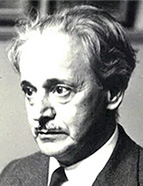

The extent of the design is immediately defined by the philosophical ideation of H istory as a whole, without ignoring the specificity of the different fields or approaches that may make it up but refusing to allow this context to be offered as a sum rather than a synthesis achieved by the quality of perspective, or to favour the vision of “ l’histoire de l’homme en quelque sorte du dehors ” ( OF III , p. 285), as is the case when temporal factuality is preferred to the stability resulting from the substantification of “ historical constants’, such as art or science are for him. Nor does he sympathise with the narrowness of notions such as nationality, both for what it contains of locality and for what it implies of currentness, being a recent creation and therefore not suited to other contexts ( OF III , p. 523). Conversely, he recognises the importance of embracing the contribution of other sciences. The history of man in action ( OF III , p. 282) is therefore based on four main axioms: “ on pense en perspective dans le temps ” ( OF III , p. 286); “ l ’ intelligence humaine est l ’ élément principal interne de l ’ évolution historique’; “ l ’ évolution historique est orientée’; “ les conditions de l ’ évolution historique sont intelligibles ” ( OF I , pp. 216-217). Despite the general nature of its scope, it is clearly distinguished from the ontological aspect of Hegelian universal history, approaching the transcendental nature of Kantian universalism and the long-term references of the Annales School without referring to it or its most prominent theoreticians .
As evidenced , keeping the time perspective open is decisive since restrictions are tantamount to particularisations with which the capacity for meaning is inevitably lost. Similarly, it is essential to avoid the confusion between fact and singular event so that fact and perspective can be correlated, materialising knowledge on a plane of effect that is sufficiently abstract, dense and, therefore, maximally encompassing, which is why he devoted a significant part of his reflection to it. Given that it has to ensure the passage from the lived to the known, offering a possible framework for the diversity of information, “ the fact will not be historical unless it ceases in some way to be a sum of particularities and is translated into some kind of social dynamism ” ( OF III , p. 557) .
This work is financed by national funds through FCT - Foundation for Science and Technology, I.P, in the scope of the projects UIDB/04311/2020 and UIDP/04311/2020.
